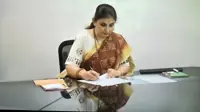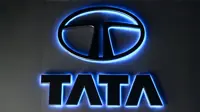Govt allays fears of rise in prices of essential drugs
27 Sep 2016
The government has fixed the ceiling prices of 464 formulation, amounting to nearly 7,000 drug brands, after the announcement of the National List of Essential Medicines (NLEM) 2015 and the revised list of Schedule-I drugs, resulting in aggregate savings of Rs2,288 crore to consumers across the country by way of reduced prices.
Stating this in a release today, the union ministry of chemicals and fertilisers also refuted reports to the effect that prices of 100 drugs may increase by 10 per cent as they are now out of essentials list.
The news item is misleading and is not in tune with the factual position, the release said, adding, the correct factual position is that consequent to notification of National Pharmaceuticals Pricing Policy-2012 (NPPP-2012) on 7 December 2012 and notification of Drugs (Price Control) Order, 2013 (DPCO, 2013), all medicines as specified in the NLEM-2011 were brought under price control.
The ministry of health and family welfare had constituted a core committee under the chairmanship of secretary, department of health research and Dr Y K Gupta, professor and head of the department of pharmacology, AIIMS as the vice chairman to revise the NLEM. This committee evaluated the medicines on the objective criteria for inclusion and deletion.
The criteria for deletion of medicines from National List of Essential Medicines is as follows:
- The medicine has been banned in India;
- There are reports of concerns on the safety profile of a medicine;
- A medicine with better efficacy or favourable safety profiles and better cost-effective is now available;
- The disease burden for which a medicine is indicated is no longer a national health concern in India; and
- In case of antimicrobials, if the resistance pattern has rendered a medicine ineffective in Indian context.
Based on the scientific criteria, the core committee recommended inclusion of 106 medicines and deletion of 70 medicines from the earlier NLEM, 2011. The Pharmaceutical Pricing Policy entails the price control of only schedule-1 medicines which are included in the NLEM. The medicines, which ceased to be part of NLEM, 2015 and Schedule-1, will only be monitored as non-scheduled medicines. Non-scheduled medicines are allowed an increase of up to 10 per cent in the prices every year, which is monitored by the National Pharmaceutical Pricing Authority (NPPA).
''In the detailed analysis of the number of medicines deleted and added in the Schedule-1, therapeutic category-wise in the revised NLEM, 2015 shows that there are sufficient number of medicines in each of the categories. These scheduled medicines represent a wide range of medicines for different therapeutic groups and will help in promoting medicines with better efficiency and favourable safety profiles, which are now under price control due to their inclusion in NLEM, which is in the public interest,'' the release stated.






















